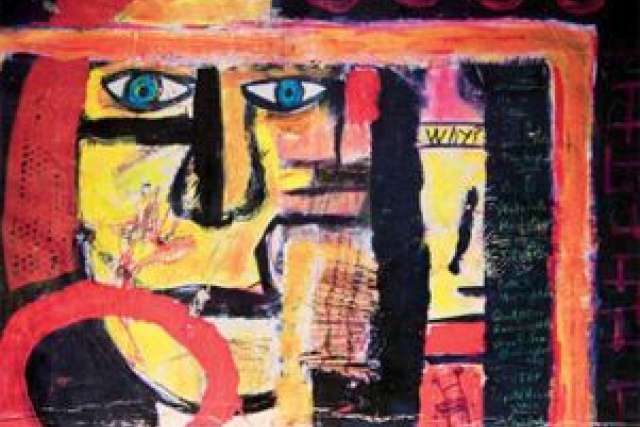The pain of loneliness. The pain of post-traumatic stress. The pain of spinal stenosis, of uterine fibroids, of mortality. So how does someone explain one’s pain to another person, to make it real for someone else? By drawing it.
To help UCLA medical students understand the experience of pain and illness and to reinforce in them that, as physicians, they must treat the person and not just the disease, “Pain,” an exhibition of postcards drawn by patients, has been put on display in UCLA’s David Geffen School of Medicine’s Gallery at the Learning Resource Center through August 31.
For the exhibit, 165 postcards were mailed to UCLA from people all over the world. “I expected to receive artwork about physical pain, like broken legs,” said gallery curator and guest artist Ted Meyer, who, in his own work, mixes art and medical images as a way to understand his childhood experiences of illness. “But nearly half of the cards were about emotional pain. That really surprised me.”
To solicit the artwork, Meyer placed notices on Facebook and websites dedicated to the niche of mail-in art. The artwork then came flooding in over two months, illustrating experiences from bunions and cystic fibrosis to pain caused by rape and anxiety. “In some cases, the two were linked, as in, ‘I suffered this injury or disease and now I’m depressed,’” Meyer said.
The exhibition is one of four that are put on each year as part of the David Geffen School of Medicine at UCLA’s doctoring program. In addition to the art exhibits, the three-year doctoring curriculum includes actors and role-playing to explore disease from the patient’s perspective and teach medical students the empathy and listening skills they need to become compassionate caregivers.
“A patient experiences illness in a very different way than a physician does,” said LuAnn A. Wilkerson, senior associate dean for medical education. “These exhibits target mostly first- and second-year students, who haven’t yet been immersed in the clinical setting. For them, disease is still a textbook concept.”
Each exhibit of artwork in the gallery program ties thematically to what students are studying in the classroom. Previous shows have focused on cancer, multiple sclerosis, migraine, Alzheimer’s disease, developmental disabilities, sexually transmitted diseases and back pain.
“Art can capture a multitude of meanings and help us see the world in different ways, including understanding what it’s like to live with illness,” Wilkerson observed. “Pain is considered unpleasant, something to be observed from a distance. We hope these images achieve the opposite, by compelling viewers to draw closer and consider how pain affects the whole person.”
This story was originally published in U Magazine, a publication of the UCLA Health System.



